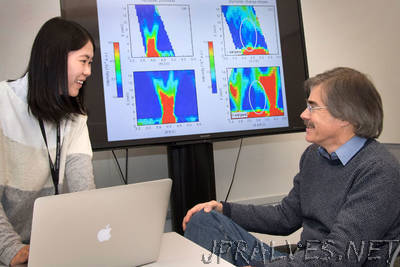
“Scientists measure subtle electronic fluctuations that could help pinpoint the mechanism behind high-temperature superconductors. High-temperature superconductivity offers perfect conveyance of electricity, but it does so at the price of extreme cold and an ever-elusive mechanism. If understood, scientists might push superconductivity into warmer temperatures and radically enhance power grids, consumer electronics, and more—but the puzzle has persisted for more than 30 years. Now, scientists have broken new ground by approaching from a counter-intuitive angle: probing so-called “bad metals” that conduct electricity poorly. The researchers found that “stripes” of electronic charge, which may play a key role in superconductivity, persist across surprisingly high temperatures, shape conductivity, and have direction-dependent properties. The results, which examined the model system of custom-grown nickel-oxide materials, were published online April 28 in the journal Physical Review Letters.”
